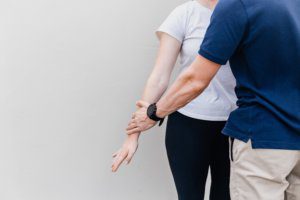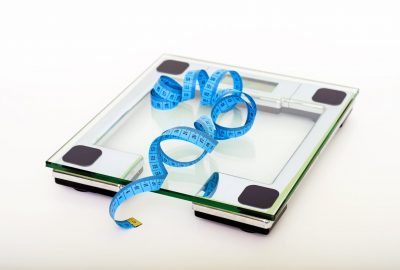Therapeutic activity is any physical activity that an individual participates in for the purpose of improving their health or functional capacity. These activities may range from simple walking on the treadmill, to more vigorous aerobic workouts such as running, cycling, etc. These programs can help reduce pain and improve mobility and quality of life for those suffering from injuries or illness. CPT codes are standardized medical codes used by physical therapists to bill their services. In this blog post, the CPT code 97530 for therapeutic activity and its usage is covered, along with a brief look into the recently introduced remote monitoring CPT codes.

What is CPT code 97530?
The 97530 CPT code may be billed when a patient engages in therapeutic activity. This CPT code for therapeutic activity includes a wide range of rehabilitative procedures that use whole-body movement to gradually improve functional performance—such as bending, lifting, carrying, and reaching. 97530 CPT code can be used for therapeutic activities to charge individual therapists or therapy assistant services.
CPT 97530: The official description as per CPT’s manual is: “Therapeutic activities, direct (one-on-one) patient contact (use of dynamic activities to improve functional performance), every 15 minutes.”
If both physical and occupational therapists treat the same patient at the same time, only one of them can bill for that treatment. For example, two therapists may work with one patient on transfer tasks for 30 minutes. In most cases where simultaneous treatment happens, the supervising therapist must bill for the therapy assistant’s services as part of his or her own, but can only charge for one person’s assistance.
Reimbursement for CPT code 97530
The reimbursement rate for CPT code 97350 is $40.42. The following conditions are required for billing practitioners who use the 97530 CPT code.
- Therapeutic activities must be directly supervised by a doctor or physical therapist.
- Since the patient is unable to engage in therapeutic activities on their own, therapeutic exercises are aimed at restoring or improving specific functionality.
- The therapeutic activity undertaken has a clear link to the underlying medical condition for which the therapeutic activity was prescribed.
97530 CPT Code Modifiers
59 modifier: The 59 modifier is the most commonly used CPT code modifier for therapy services. It can be used to distinguish between two or more services provided during the same session. The use of the 59 modifier indicates to the insurance company that each of the services was deemed medically necessary and performed independently of all others. For example, if the therapist bills for manual therapy (97140) and therapeutic activities (97530), in the same session, the 59 modifier is used. The therapist can bill for CPT code 97530 with modifier 59 added on, as long as the services were performed during separate 15-minute increments.
GP/GO/GN Modifier: In an interdisciplinary setting, this modifier may be used to clarify who provided the services. When billing for therapy services, the therapist must make sure to include this modifier so that insurance companies can accurately reimburse the service provider, based on the type of therapy and in accordance with the patient’s benefits. GP – physical therapists, GO – occupational therapists, and GN – speech-language pathologists.
The Therapeutic Exercise Procedure Code 97530
The CPT manual provides local coverage determinations which denote that therapeutic activities are reasonable and necessary for many patients with movement-related injuries needing a broad range of rehabilitative techniques. Movement activities can focus on a specific body part, or could also involve the entire body.
The procedure for 97530 involves the use of functional activities (e.g., bending, lifting, carrying, reaching, catching, and overhead activities) to gradually improve functional performance. The activities are usually aimed at treating loss or restriction of mobility, strength, balance, or coordination. This requires a skilled therapist who designs the treatment to meet a patient’s specific functional need.
When using 97530, the therapist should focus on tasks ending in “ing” to improve overall function, such as carrying, lifting, handling, reaching, transferring, and transporting. Specific examples of these activities include hand assembly, transfers (e.g., chair to bed), swinging, lunging/catching, and throwing. There can be confusion between 97530 and 97110. However, choosing 97530 or 97110 depends on the intent of the task. For instance, squatting could be used for strengthening purposes and billed under therapeutic exercise(97110). However, if the patient is squatting in order to pick up something from the floor then it can be coded as a therapeutic activity (97530).
What Documentation is Required for CPT Code 97530?
It is important and part of best practice to determine what functional outcome the therapist expects from the task. The documentation needs to include the specific focus of the functional task and/or activity and should be clearly identified in the goals for 97530. The written plan of care must include dynamic activities, which are directed at a specific outcome. A simple example of documentation is below:
“PT facilitated vestibular training for patient to return to driving independently. Patient instructed in simulated neck rotation tasks mimicking skills needed to operate a vehicle. Patient completed x 15 each side with no signs of dizziness or nystagmus. Patient was then instructed in item retrieval tasks from floor level to further assess any increased report in dizziness. Patient able to retrieve a total of 5 items (1 item at a time) and return to erect postural alignment in sitting without complaints of dizziness.”
In summary, CPT code 97530 refers to therapeutic activities that require direct one-on-one attention from the therapist. This can be done in a variety of ways, including providing treatment to individuals as they interact with other patients or staff members or providing individualized care through reading and physical therapy activities.
The Introduction of Remote Therapeutic Monitoring
With the evolution of remote therapy practices and the adoption of advanced technologies like motion tracking and AI to aid with physical therapy, the CMS has added new CPT codes to cater to this new field. Remote Therapeutic Monitoring (RTM) services deal with musculoskeletal conditions and respiratory systems. It is not intended to act upon the body’s physiological processes. Rather, its focus is on therapy, adherence, and response rates.
Like the existing Remote Patient Monitoring (RPM), RTM will involve patients wearing sensor-equipped devices at home to monitor their health. RTM’s billing structure is also similar to RPM’s. One notable aspect is that unless clinical staff are directly supervised by a physician or other qualified professional, they cannot provide RTM services. Currently, only physical therapists, occupational therapists, dietitians, clinical psychologists, and other QHCPs can bill for services under RTM.
Following are the 5 most common RTM CPT codes.
CPT Code 98975: Initial Set-up and Patient Education
Includes instruction in the use of equipment, as well as its installation and setup.
CPT Code 98976: Supply of Device for Monitoring Respiratory System
Includes supply of device(s) along with scheduled (e.g., daily) recording(s) and/or programmed alert(s) transmission to monitor the respiratory system, every 30 days.
CPT Code 98977: Supply of Device for Monitoring Musculoskeletal System
Supply of device(s) along with scheduled (e.g., daily) recording(s) and/or programmed alert(s) transmission to monitor the musculoskeletal system, every 30 days.
CPT Code 98980 – 81: Monitoring / Treatment Management Services
Includes treatment management services provided by a physician or qualified healthcare professional in a calendar month with at least one interactive communication with the patient or caregiver during the calendar month. The initial 20 minutes are billed under 98980 and each additional 20 minutes after that are billed under 98981.
Different reimbursement rates are applied to different CPT codes based on the level of skill and time needed to complete a given therapy session. Some activities require more knowledge than others and must be performed by a professional. Some exercises could be guided by evolved Physical Therapy technology platforms such as Kemtai, which use motion tracking technology coupled with AI to deliver virtual exercise services that could improve patient adherence and potentially free up the therapist’s bandwidth.
[WPSM_AC id=1870]

